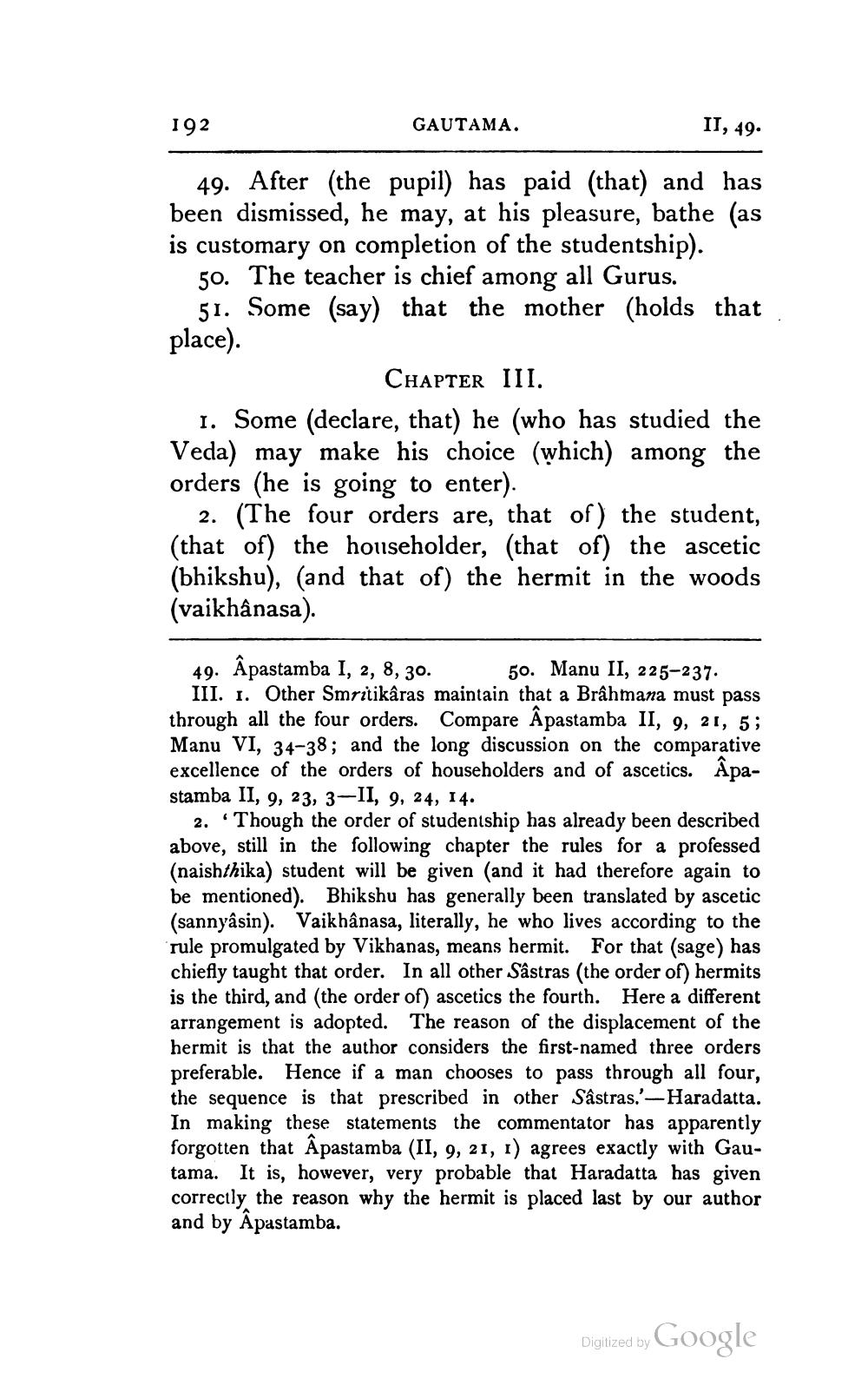________________
II, 49.
49. After (the pupil) has paid (that) and has been dismissed, he may, at his pleasure, bathe (as is customary on completion of the studentship).
192
GAUTAMA.
50. The teacher is chief among all Gurus.
51. Some (say) that the mother (holds that place).
CHAPTER III.
1. Some (declare, that) he (who has studied the Veda) may make his choice (which) among the orders (he is going to enter).
2. (The four orders are, that of) the student, (that of) the householder, (that of) the ascetic (bhikshu), (and that of) the hermit in the woods (vaikhânasa).
49. Âpastamba I, 2, 8, 30.
50. Manu II, 225-237.
III. 1. Other Smritikâras maintain that a Brahmana must pass through all the four orders. Compare Âpastamba II, 9, 21, 5; Manu VI, 34-38; and the long discussion on the comparative excellence of the orders of householders and of ascetics. Âpastamba II, 9, 23, 3-II, 9, 24, 14.
2. Though the order of studentship has already been described above, still in the following chapter the rules for a professed (naishthika) student will be given (and it had therefore again to be mentioned). Bhikshu has generally been translated by ascetic (sannyâsin). Vaikhânasa, literally, he who lives according to the rule promulgated by Vikhanas, means hermit. For that (sage) has chiefly taught that order. In all other Sâstras (the order of) hermits is the third, and (the order of) ascetics the fourth. Here a different arrangement is adopted. The reason of the displacement of the hermit is that the author considers the first-named three orders preferable. Hence if a man chooses to pass through all four, the sequence is that prescribed in other Sâstras.'-Haradatta. In making these statements the commentator has apparently forgotten that Âpastamba (II, 9, 21, 1) agrees exactly with Gautama. It is, however, very probable that Haradatta has given correctly the reason why the hermit is placed last by our author and by Âpastamba.
Google
Digitized by




